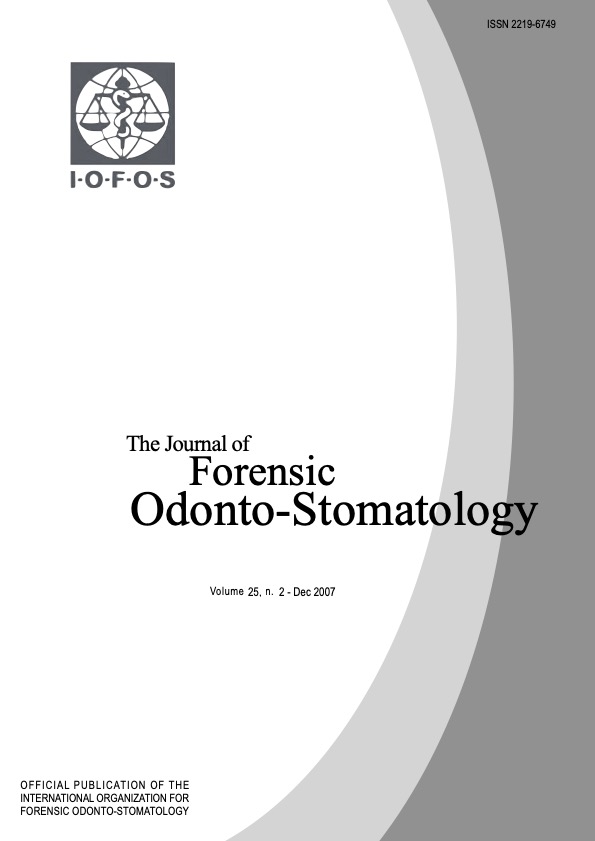Applicability of the Dimodent equation of sex prediction in a Lebanese population sample
Abstract
Background: Sexual dimorphism represents a group of morphologic characteristics that differentiate a male from a female. Among these dimorphic traits, tooth size has been evaluated in various populations for its interest in anthropologic and forensic applications. Recent studies have shown that dental dimorphism is populationspecific and that the most dimorphic tooth is the mandibular canine. In addition to the dimension of single teeth in dimorphic dental assessment, dimorphism has been evaluated, using equation of prediction, applying various dimensions of one or more teeth or indices. Purpose: The objective of this preliminary study was to evaluate the applicability of the Dimodent predictive equation in sex determination in a sample of Lebanese young individuals. Materials and Methods: Mesiodistal widths of the mandibular canine and lateral incisor were measured from dental casts of the permanent teeth of 60 Lebanese University dental students (30 males and 30 females), aged 18-25 years. The sex-predictive equation of Fronty was applied to calculate the percentage of accurately-diagnosed sexes. Results: Accuracy of sex prediction ranged from 63.3% for males and 90% for females. Overall, the Dimodent equation enabled a correct sex determination in 76.7% of the cases. When compared to the accuracy obtained with this equation in a French population sample, the accuracy was significantly different (Z=3.1225). Conclusions: This research supports earlier studies that sexual dimorphism is population specific. The difficulty or lack of dimorphism seems to originate 'from male subjects. Further investigations should include the preparation of population-specific prediction tables and testing their accuracy in a larger sample with a stronglye stablished Lebanese background.

